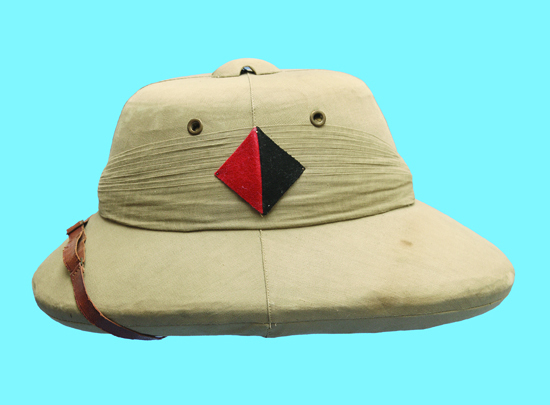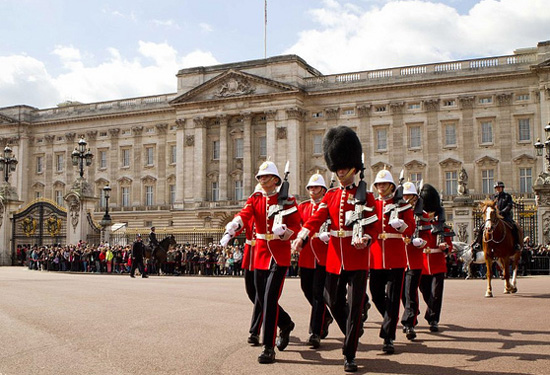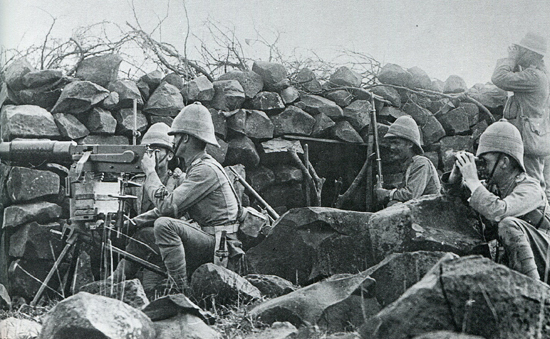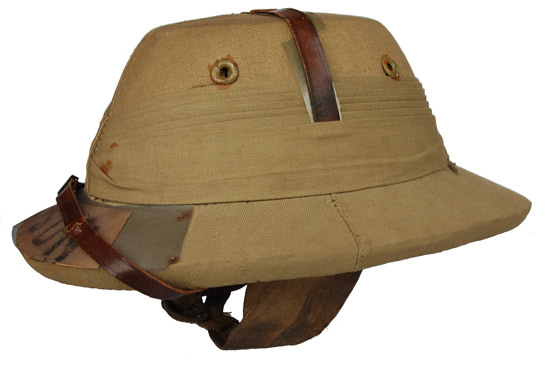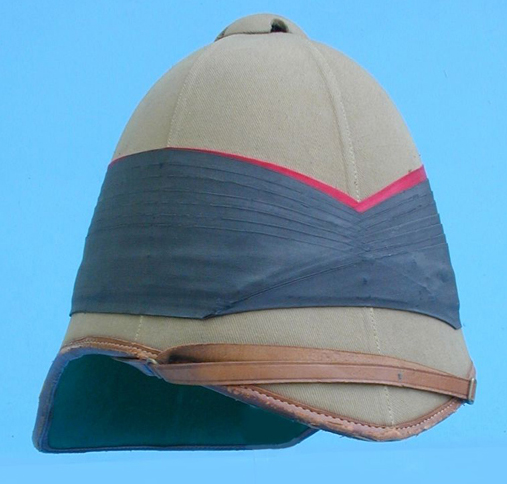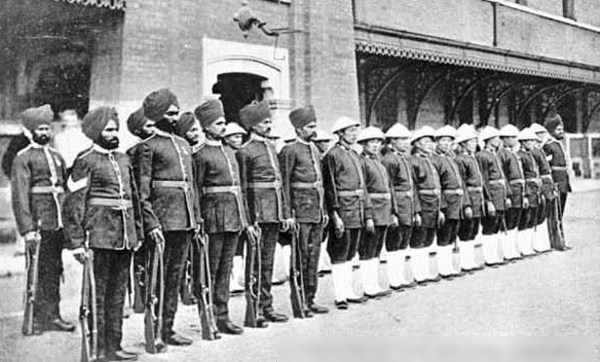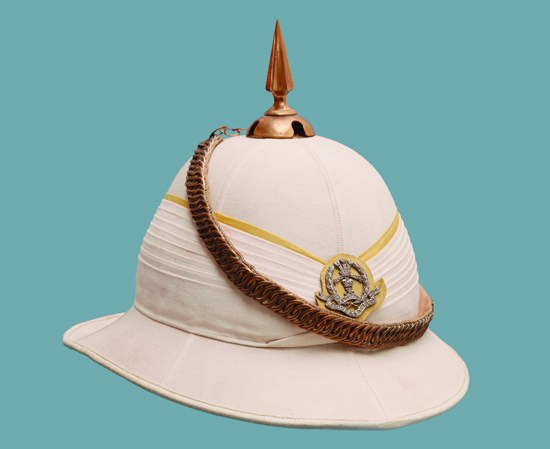
This full dress Wolseley helmet was worn by Lt. Hubert Arthur Oldfield Hanley, DSO, MC, who served in the 1st,2nd and 4th Battalion, the Middlesex Regiment. Note the lemon yellow piping to the puggaree and the cloth backing to the puggaree badge. Lemon yellow was the colour of the facings for the Middlesex Regiment (Author’s collection)
Hubert Arthur Oldfield Hanley was born in Headington, Oxfordshire in 1881, the only son of Charles Hanley, and in 1909 married Mary Constance, the eldest daughter of Charles Walker of Burwash, Sussex. He was educated at Downside school in Somerset and served in the First World War, being mentioned in despatches three times and was awarded the Distinguished Service Order and the Military Cross. He was commissioned as Second Lieutenant into the 6th Battalion (Militia), the Royal Warwickshire Regiment, on the 22nd April 1902. Continue reading →
